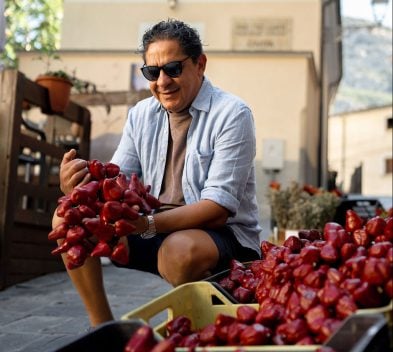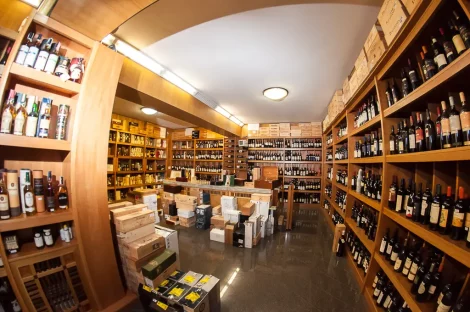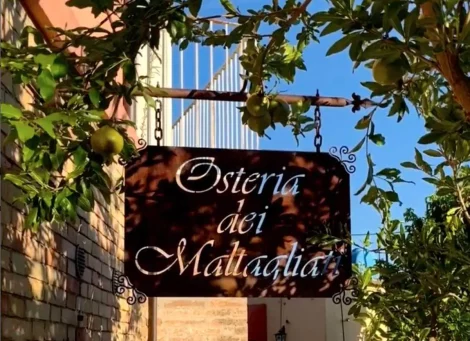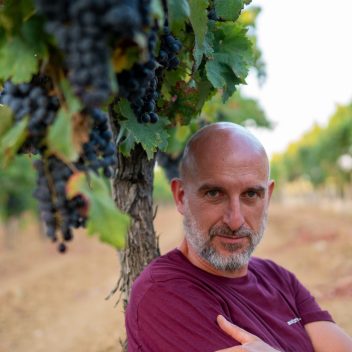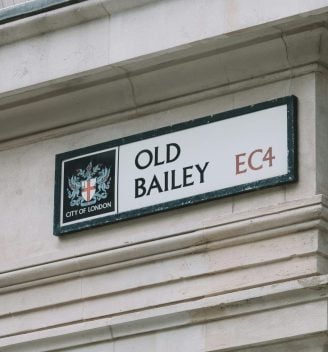by Piermichele Gamba
Civico 15 is a charming place in the old village of Villanuova that blends – or rather contaminates – history and modernity, even in its interiors and furnishings (this used to be the stables of the Gancia Castle). It’s in a location that overlooks the town, surrounded by a panoramic view of Moscato vineyards, the noble grape variety – the latest of the 19 DOCG wines of Piedmont – that reigns over this part of the region. In this area, one typically expects a strict culinary tradition, yet, if one looks closely, there are pockets of fusion that dot Monferrato and the Astigiano Langhe.

Like this “enoteca gastronomica”, where the cuisine forms a thread linking Piedmont and Sicily, the land of origin of Manuela’s maternal side, as well as Max, the other owner, who is an architect by trade (clearly visible in the design of the interiors) but is also deeply involved in the business. Then there’s Rocco (pictured), a chef from Trapani with a strong Sicilian spirit: try his sarde a beccafico, caponata di melanzane, anelletti al forno, spaghetto “chi t’arricria”, and cunzata, a sauce he uses to season Fassona beef tartare. Among the desserts, don’t miss the cannolo filled with sheep ricotta cream or the brioche col tuppo filled with gelato. Of course, there’s no shortage of iconic local dishes such as peperoni con bagna càuda, hand-made plin served with butter and sage or in a napkin, oven-roasted beef marrow with salt cod and bagnetto verde, roast rabbit, and bonet, prepared according to the traditional recipe but… served in a cup.
Russian Salad: a bit of history
And then yes, there it is – insalata russa, one of the pride and joys of Savoyard cuisine, although with quite uncertain and contested origins. Whether Franco-Russian or Italian, whether created in the mid-1800s by Lucien Olivier, a Franco-Belgian chef at Moscow’s Hermitage, or dating back to the 1500s thanks to the cooks of Catherine de’ Medici – here, it matters little. As do the various names it has acquired around the world, like Italian salad, Olivier salad, Hussars’ salad, or white salad. For us, it remains insalata russa, which became widespread from the late 19th century thanks to authors such as Giovanni Nelli in Il Re dei cuochi, Pellegrino Artusi in La scienza in cucina e l’arte di mangiar bene, and Ada Boni in Il Talismano della felicità. Until then, it was the preserve of nobility, officials, and dignitaries.

On the other hand, in Piedmont, the merging of court cuisine – itself indebted to French blueprints and codifications – with a much more widespread rural cuisine gradually gave rise to dishes of varying complexity, which in time became staples of the so-called bourgeoisie, and even of more modest social classes who adopted them into their own “Sunday cooking.” It’s clear that these codifications were empirical and oral, and the only way they spread was through generational hand-downs. That’s why talking about philology in these traditions is rather bold, given that every bell tower, if not every family, has its own version – typically considered the best.
The Russian Salad recipe from Canelli is a family secret
And this is where Mamma Giusy enters the scene, a true Sicilian who, alongside her babbaluci (snails with onion, tomato, and chilli), brings to the table one of the best Russian salads in the region. The basic references are all there, but this version reveals an uncommon balance, to which every element contributes: vegetables, richness, acidity, sweetness, and savouriness combine into a bouquet of fresh and satisfying flavours, all well highlighted by the perfect consistency of each component.
Giusy almost brushes off the compliments when asked about the recipe and technique:
“My mother-in-law taught me – she’s Piedmontese through and through. I’ve simply added my attention, passion, and care, repeating what I’ve learnt. Fresh vegetables, hand-cut and boiled separately when needed, eggs, homemade mayonnaise, good quality tuna. Then there’s the visual instinct that guides the proportions… and one secret ingredient that makes it special and uniquely mine – but since it’s a secret, I can’t reveal it.”
And so, we’re left in suspense, but full of trust. And we’ll be back to taste it again.
Civico 15 – Canelli (AT) – p.zza San Leonardo, 10 – 329 4379547 – ristorantecivico15.it

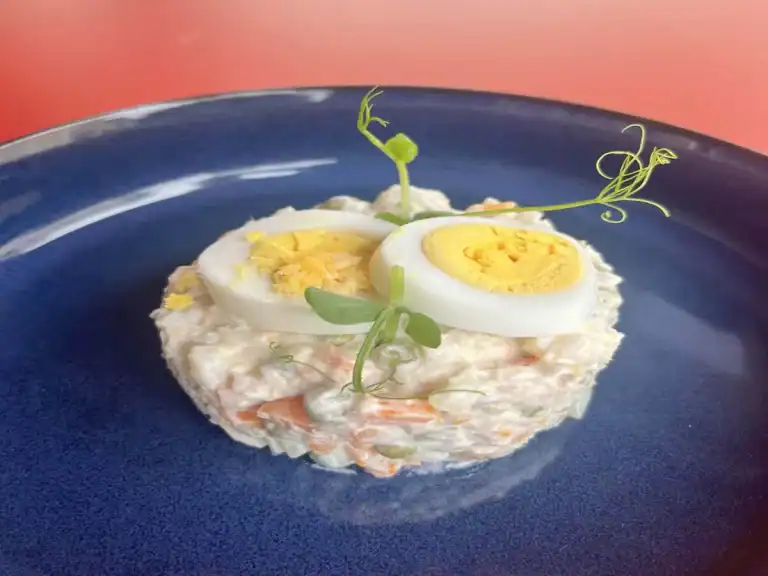

 The social media star resurrecting Italy's forgotten culinary classics
The social media star resurrecting Italy's forgotten culinary classics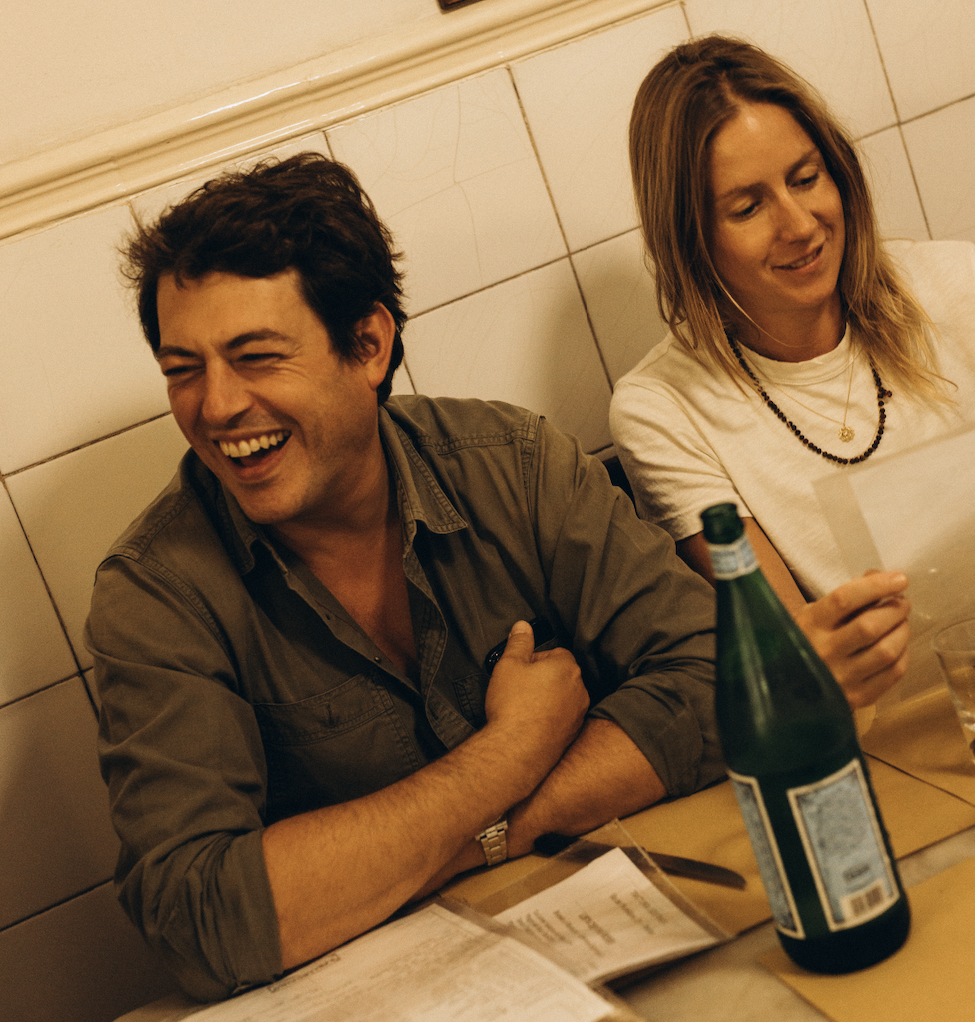 Giovanni Mazzei brings a taste of Florence to London
Giovanni Mazzei brings a taste of Florence to London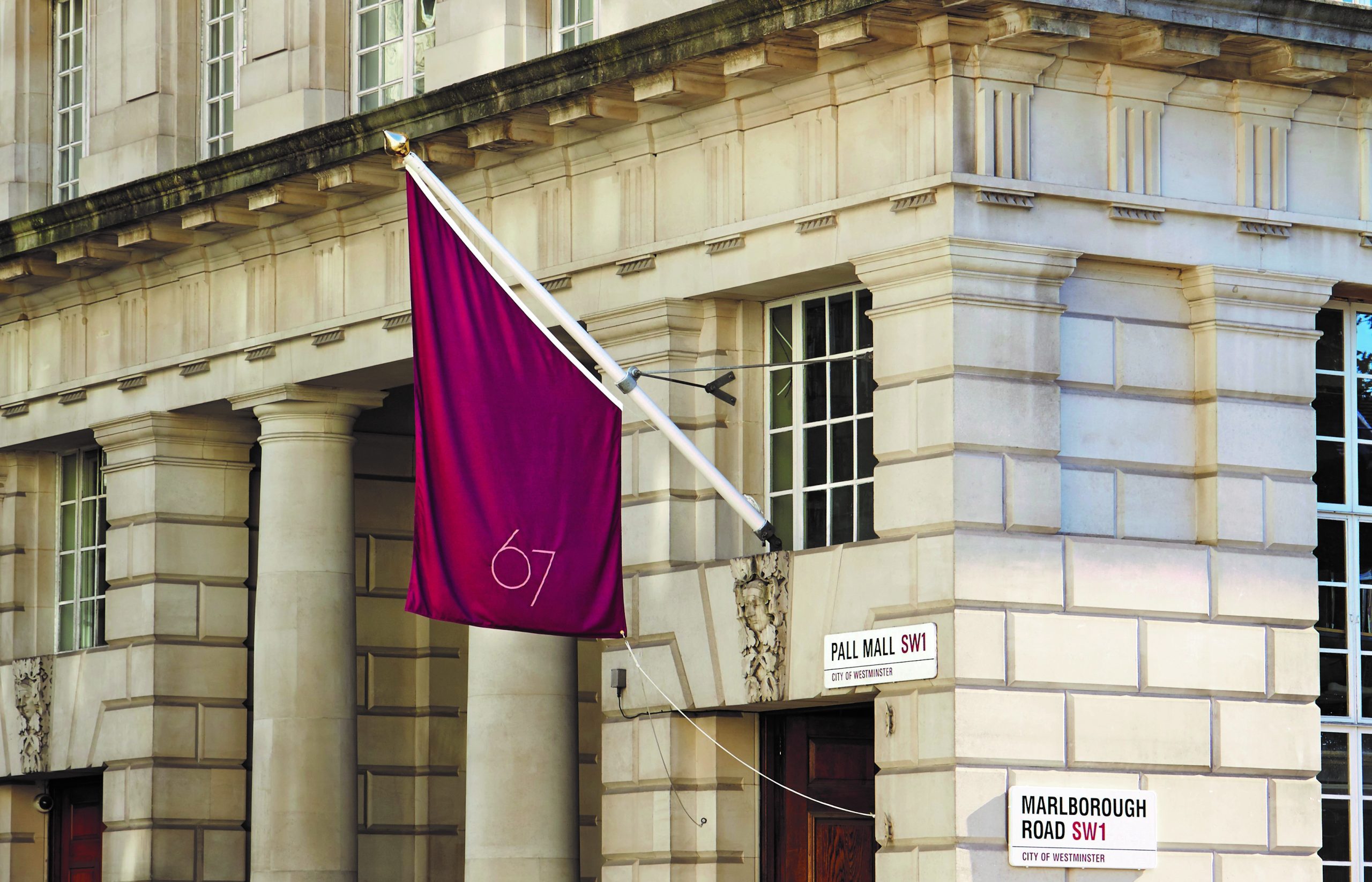 Burgundy dominates but Italy is rising: a look at London's fine wine trends
Burgundy dominates but Italy is rising: a look at London's fine wine trends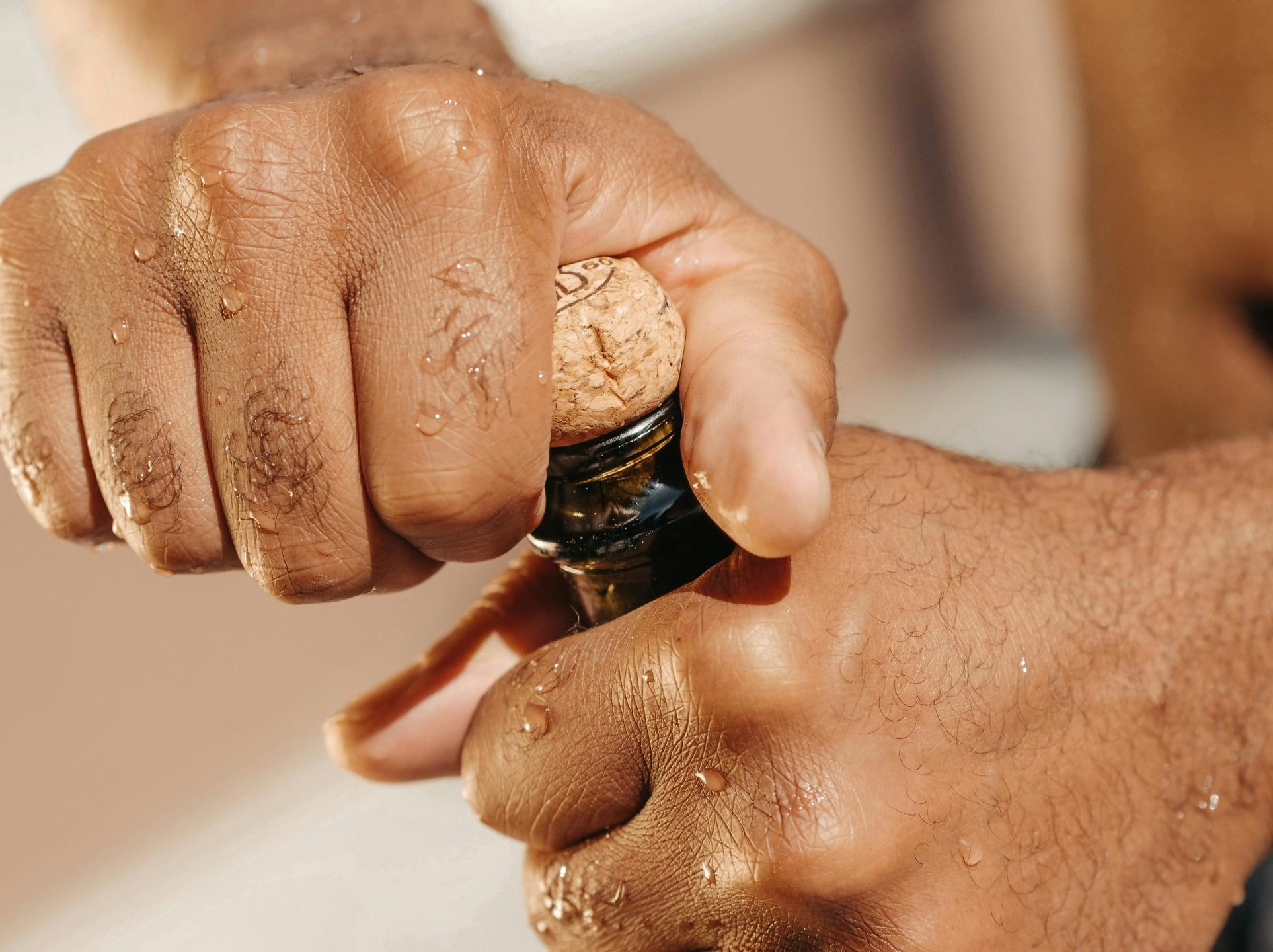 Costco Prosecco recalled over exploding bottle fears
Costco Prosecco recalled over exploding bottle fears The Consorzio Vino Chianti heads to Brazil: “An attentive public and a dynamic market”
The Consorzio Vino Chianti heads to Brazil: “An attentive public and a dynamic market”